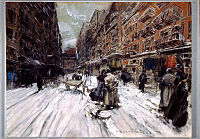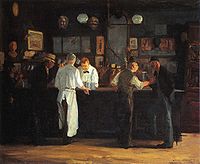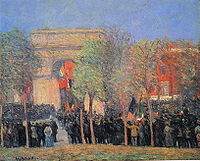We’re proud to present information at the art center about the Ashcan School, contemptibly know as the Apostles of Ugliness.
Having spurned academic painting and Impressionism as an art, Robert Henri wanted ‘paint to be as real as mud, as the clods of horse manure and snow that froze on Broadway in the winter.’ This was the dynamic that made up the concept of the artists from the Ashcan school, known by some as the New Realists, New York Realists, and more contemptibly Apostles of Ugliness.
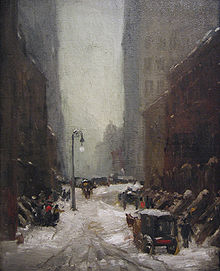
Robert Henri was the most influential of the group. He gathered around himself the likes of George Luks, William Crackens, John Sloan, Everett Shinn, and other artists, illustrators, and jounalists who were determined to rescue art from what they felt was a bloodless aestheticism.
In 1908, the art information centered on the above listed artists and Ernest Lawson, Arthur B. Davis, and Maurice Prendergast who held a successful show at the Macbeth Gallery in New York. The Eight (as they came to be known) were responsible for organizing the Armory Show of 1913-the most important exhibition in the history of American art.
The attention the social reformers of the group, Henri, Luks and Sloan paid to the more seamier side of life mirrored a social depiction as well as an artistic one.

Looking at Henri’s Salome of 1909 the critic Robert Hughes observed: “Her long legs thrust out with strutting sexual arrogance, and glint through the over-brushed back veil. It has far more oomph than hundreds of virginal, genteel muses, painted by American academics. He has given it urgency with slashing brush marks and strong tonal contrasts. He’s learned from Winslow Homer, from Edouard Manet, and from the vulgarity of Frans Hals.” (Quote source, Wikipedia)
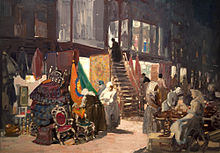
George B. Luks made many paintings of working class subjects and scenes of the urban street.
Luks’s painted representations of immigrant shoppers, pushcart peddlers, casual strollers and curious onlookers of the ethnic variety that characterized metropolitan, turn-of-the century New York. His work typifies the ‘real-life’ scenes painted by the Ashcan School artists.
This information is centered on the art of the Ashcan School, please enjoy:
